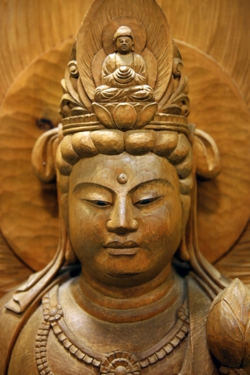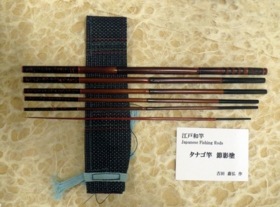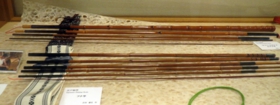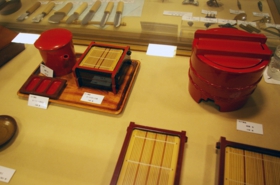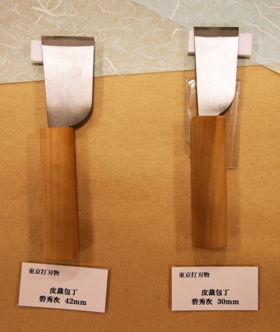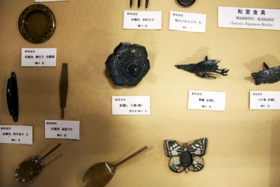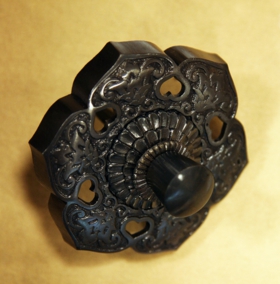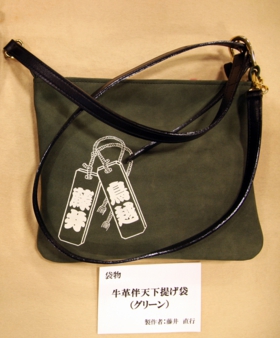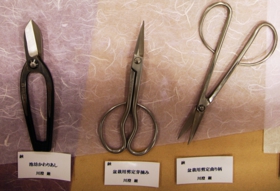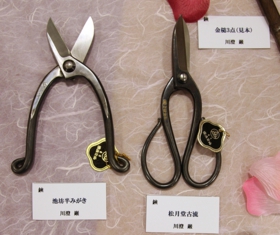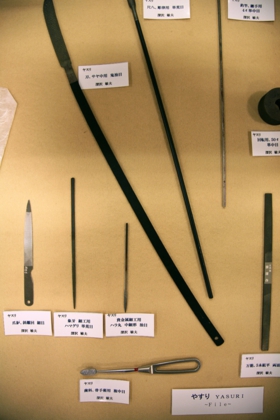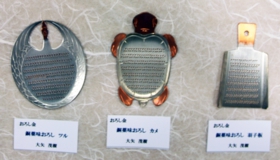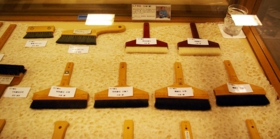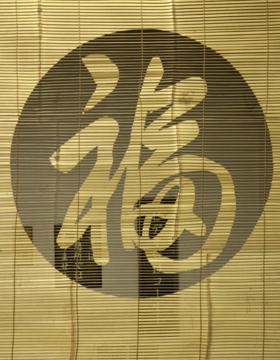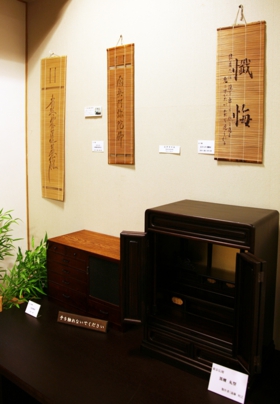Lacquered bamboo fishing rods by Yoshihiro Yoshida
Lacquered bamboo fishing rods by Yoshihiro Yoshida
In the past, there were many fishing rod makers not only in Taito City but also in other areas. Nowadays, some fishing rod makers use new materials, and Western-style fishing rod manufacturers have increased. In Taito City, there are famous traditional fishing rod makers. Each makers specialize in different types of rods. For example, they make rods for sea fish, black scrapers, Japanese bitterlings and sweetfish. I think it is better for fishing rod makers to compete one another in their specialized fields, but they need to go with the times.
Edo-style lacquerware by Yasushi Otsuka
These are lacquerware. Since there has been many soba restaurants in Tokyo, lacquerware in Tokyo often refers to trays for soba, small tables for sushi and so on.
Hammer-forged cutting blades
These are knives used for leather crafts. In this way, cutting tools and kitchen knives, which have particular uses, have been made. Some makers of these cutting tools become specialists. For example, even though a maker originally made all kinds of kitchen knives, if knives used for making tatami mats have been ordered in large numbers, he begins to specialize in making the tatami knives.
A variety of metal fittings for Japanese-style rooms
A metal fitting (an ornament to cover a nailhead) by Hiroshi Horiguchi
These metal fittings have been used as ornaments for fusuma sliding doors, furniture or houses, and as nailhead covers. Although there has been little demand for metal fittings, we should leave this kind of handicraft. Nowadays, the number of houses that have fusuma sliding doors has decreased.
An Edo-style pouch by Naoyuki Fujii
This is a leather pouch. There are also traveling sacks that are made of layers of leathers. Originally, traveling sacks had been made as tobacco sacks.
Pairs of scissors by Iwao Kawasumi
Pairs of scissors by Iwao Kawasumi
In the past, dressmaking schools used many fabric scissors, but nowadays there is no demand for fabric scissors. These are garden shears and pruning shears.
Files by Toshio Fukazawa
This long file is used for making sheathes of swords. There are also special files that are used for resecting bones during surgical operations. Fukazawa has been referred to as an endangered species like a Japanese crested ibis. A file maker is such a rare line of business.
Graters by Shigeki Oya
Edo-style brushes by Makoto Kobayashi
These are brushes for cooking and makeup. There are a variety of brushes. There is also a brush used for applying sauce on Japanese-style pancakes. This kind of brush has increased, but there is no demand for brushes used for pasting shoji or fusuma paper. There are also brushes for block prints and paintbrushes. Brushes used for applying lacquer are made of human hairs. Brushes used for writing characters with gold paint are called "Neji-fude," which are made of rats' hairs.
Edo-style bamboo blinds by Yoshihiro and Kotaro Tanaka
Edo-style bamboo blinds by Yoshihiro and Kotaro Tanaka, A Buddhist altar (at the bottom of the lower image) by Toshiyuki Endo
Bamboo blinds are displayed in a way they are hung in ordinary houses. Also, special bamboo blinds that are used as hanging scrolls have been made. Originally, Chinese characters, such as "Tenpura," or deep-fried fish and vegetables, and "Unagi," or Japanese eel, were often watermarked on bamboo blinds because there was no paint in the Edo Period in which only sumi ink was used to write characters. Since sumi ink comes out when it gets wet, characters were watermarked on bamboo blinds in this way. Engraved wooden signboards and blinds have been used for that purpose. Blinds have been made of bamboo or reed because it does not lengthen and shorten when moistened or dried.
Bamboo can be easily obtained in Japan, and has been valued, but in recent years new materials, such as plastic, have been increasingly used. Nowadays, lanterns made of paper and thin bamboo are rare. Most lanterns are now made using thin plastic or wires. Paper can be easily pasted on machine-made plastic or wires. Plastic or wires is not a suitable material for blinds. If wood or new materials is thinly processed, it becomes warped. In the late Taisho Period, wood blinds, which look like Venetian blinds, appeared. Quartersawed sawara cypress does not become warped, so it was used for the wood blinds. However, it became scarce, so other types of wood began to be used. As a result, the slats became warped, and fell in production. Bamboo blinds are often used in tea huts, temples and shrines. Some people donate bamboo blinds to temples or shrines. Traditional crafts, such as bamboo blinds and reed screens, might reflect a revival of Japanese-style lives in recent years. This kind of product deepens its own charm as being used. If it is broken, it can be fixed and used for a long time.













